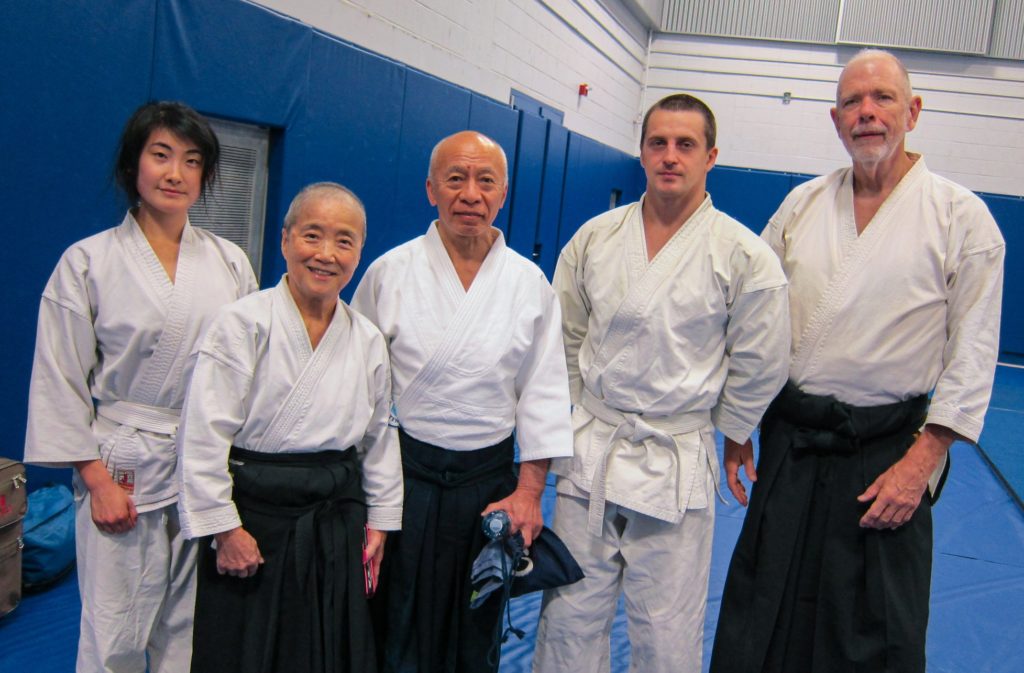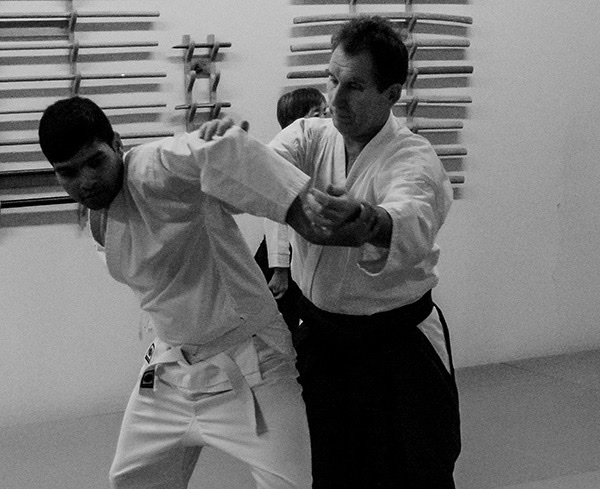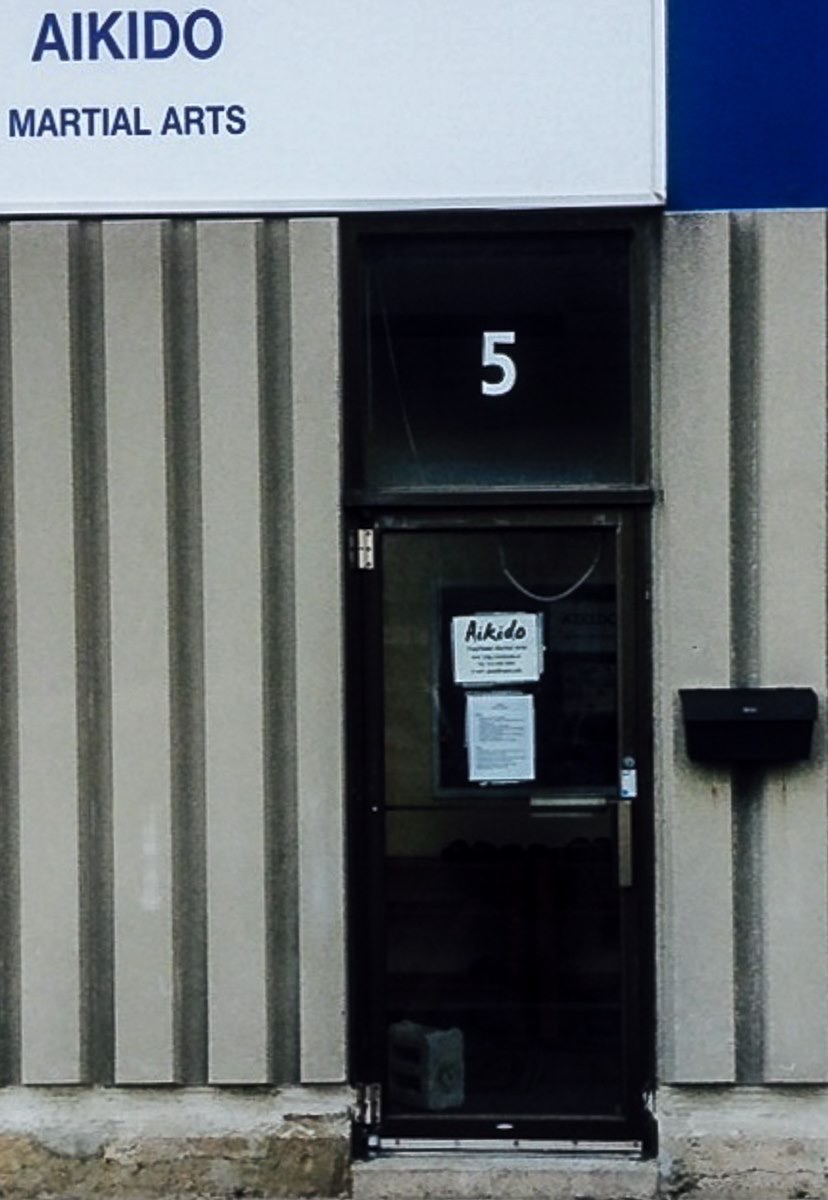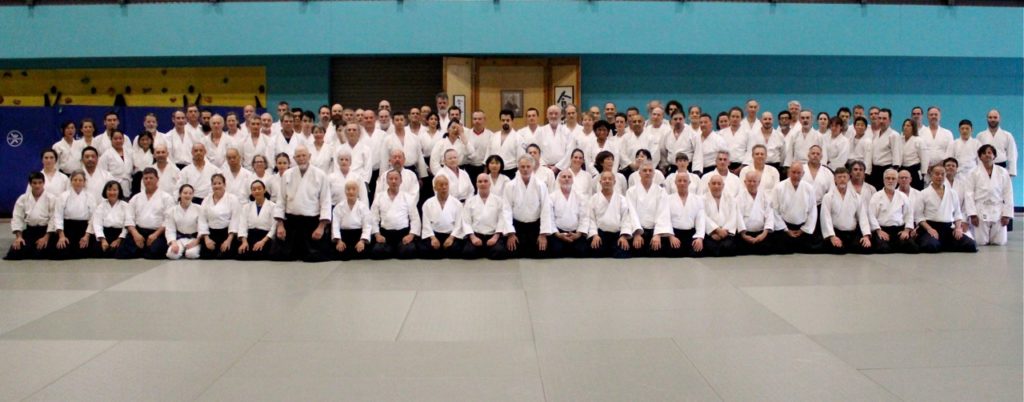Sharing a Facebook posting from an old Aikido friend, Kim Taylor, SDK Martial Arts Supplies.
A good attack
Aikido last night, and two things came up right away. Aikido is not self defence, and it is not fighting. It’s not even competition. If you think of it in those ways you will be missing the point. There are lots of self defense courses out there, some of them very good. There are also lots and lots of judo and MMA and BJJ clubs around, so why try to get apple juice from an orange?
Can you use aikido for self defence? Of course you can, it’s a martial art. You can use a screwdriver for a dirk, a garbage can for a shield, the proverbial broomstick for a jo. That doesn’t mean that’s what they are for.
Aikido is the iaido of the grappling world, it’s where you can perform the whole of the art without modified weaponry (techniques). It’s where you can go freeform without fear of hurting each other, using techniques that, if you were competing, would have to be modified. Kotegaeshi is dangerous, Sankyo is dangerous, Nikkyo is dangerous, we’ve all suffered damage to our wrists from these things. The pins can roll a shoulder joint out of the socket quite easily. Thankfully, we don’t compete with aikido, we cooperate to allow each other to practice.
How do we do that? By paying attention and never opposing force with force. You counter force with movement and movement with avoidance. Last evening I heard, across the dojo, “oh, I’m holding on, I can’t do the technique, you grab me”. Nonsense, you can do the technique, you just won’t be doing standard aikido. Our attackers hold on to us so that they can let go at their correct moment, in order to fall or roll away safely.
Self defence says break that hold and run like hell. Fighting says break that hold and hurt them. Aikido says that uke hangs on and keeps hanging on until nage throws him.
Without a good uke you can’t do nice aikido. It’s hard to cooperate with a beginner uke, you need someone who is skilled to work full speed at the edge of control. You get to the edge of a beginner’s control really fast.
A good uke works at it, has good rolls, fast feet, a good body sense of where they are in the room. Good uke do not crash into other students or the wall. Most folks think it’s nage who throws uke but it’s really uke who leaves the technique when he feels it’s done, it’s uke who stays just ahead of damage in order to draw nage into good habits.
There are no pain throws in aikido. There are painful throws, but that’s not the same thing.
An over-helpful uke falls down way too soon and so we get woo-woo aikido. Some seniors may even convince themselves that their technique is magical. Watch those magical folks and you’ll see a couple of uke who are really, really good. A good uke makes nage look good.
Good aikido (on both sides) becomes a joyous challenge (I won’t say competition but that’s what it is, a caring, careful competition using full control, just as a weapons kata can become) at the edge of the cliff. No falling over, one or the other will snatch their partner back before that happens. Can you imagine the sensitivity that requires, the attention?
What, exactly does uke do? Well he doesn’t just punch and stand there waiting for nage to drag him around, he attacks, he continues to move and attack toward nage’s center. A good uke freezes nage to the mat if nage tries to come straight back on his force. A good uke moves ahead of the technique, but doesn’t “break” it. Nage should feel uke at the end of the kotegaeshi, he should feel the bones and tendons at the edge of locking up. This is how a good uke trains a beginner, by giving him that feeling so that the beginner won’t then turn around and damage another beginner.
Uke should understand attacking. A punch that doesn’t reach the target isn’t useful. A sword strike that misses requires nothing at all from nage. After ten years or so of weapons training I attended a class where we were doing sword, my partner swung and missed me by a foot. “How come you didn’t do the technique” he said. What technique? Without a strike to the target there is no technique to do.
So do it anyway you say? Not a good idea, training with “helpful” uke will train you into doing stupid things like breaking your posture as you chase the weapon to get hold of his wrist. That break in posture will get you hit on the head when you meet someone who can actually hit, and hit fast. Trust me on this.
There is lots of video out there, watch the superstars of today and the founders of two generations ago. Don’t think of what they are doing as competition or self defence, and don’t watch nage, watch the uke for a change. It’s a whole other art.
It’s a good attack that makes good aikido.
Kim Taylor
Nov 24, 2017




 The most difficult technique in martial arts is… walking through the front door of the dojo. Once you have done, that, the rest is possible.
The most difficult technique in martial arts is… walking through the front door of the dojo. Once you have done, that, the rest is possible.